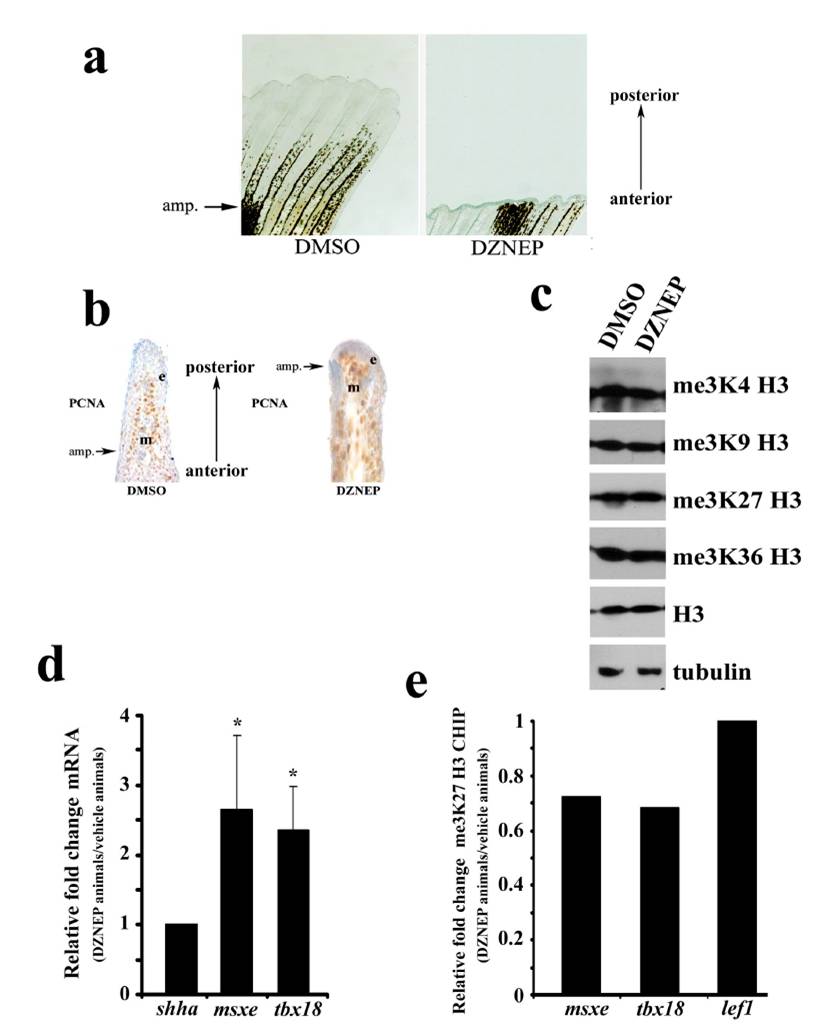Fig. S5 (a) DZNEP inhibits regeneration. DZNEP (neoplanocin A) is a direct inhibitor of S-adenosyl methionine homocysteine hydrolase, an enzyme with roles in both epigenetic silencing and cellular senescence (43–47). Caudal fins of adult animals were amputated and animals were allowed to regenerate in the presence or absence of DZNEP (15 μM) for 6 days at which point they were photographed. Shown is a typical animal (n > 10). (b) Caudal fins from control or DZNEP (15μM) treated animals at 48 hpa were sectioned and stained with the indicated antibodies. The epidermis (e) and mesenchyme (m) are indicated in each panel. (c) DZNEP does not alter global levels of histone methylation. Animals were treated as above (15μM DZNEP) and caudal fins were harvested, homogenized and boiled in SDS buffer. Extracts were subjected to SDS/PAGE and immunoblot analysis with the indicated antibodies. Some panels were stripped and re-probed with different antibodies. (d) DZENP treatment upregulates msxe and tbx18 gene expression. qPCR was used to examine differences in gene expression between DMSOand DZNEP (15μM) treated animals at 48 hpa. Data represent relative expression changes of genes (treated/untreated) at 48 hpa normalized to ribosomal protein L 18 gene expression. Error bars indicate standard deviation from the mean (n = 3). An asterisk (*) indicates a P value of less than 0.05 (comparing cDNA derived from DMSO versus DZNEP treated animals) which were calculated using a two-tailed paired t-test. (e) DZENP reduces me3K27 H3 levels at the promoters of msxe and tbx18. Extracts from DMSO- and DZNEP-treated animals (15 μM) at 48 hpa were subjected to ChIP with me3K27 H3 antibodies followed by qPCR with the primers at the transcription start sites at the indicated loci. Data are expressed as DZEP animal ChIP/control animal ChIP.
Image
Figure Caption
Acknowledgments
This image is the copyrighted work of the attributed author or publisher, and
ZFIN has permission only to display this image to its users.
Additional permissions should be obtained from the applicable author or publisher of the image.
Full text @ Proc. Natl. Acad. Sci. USA

